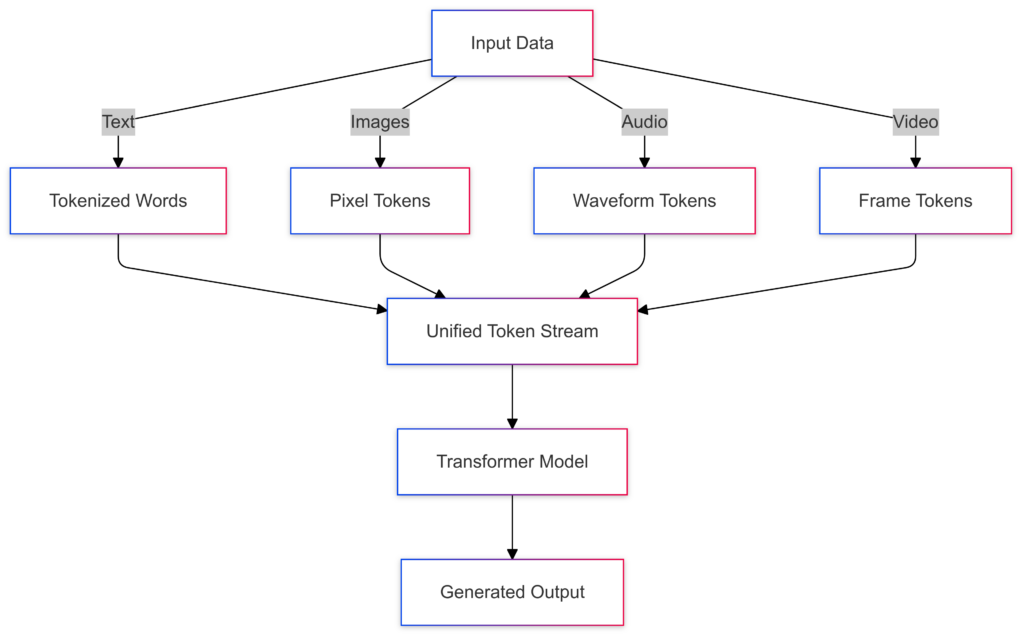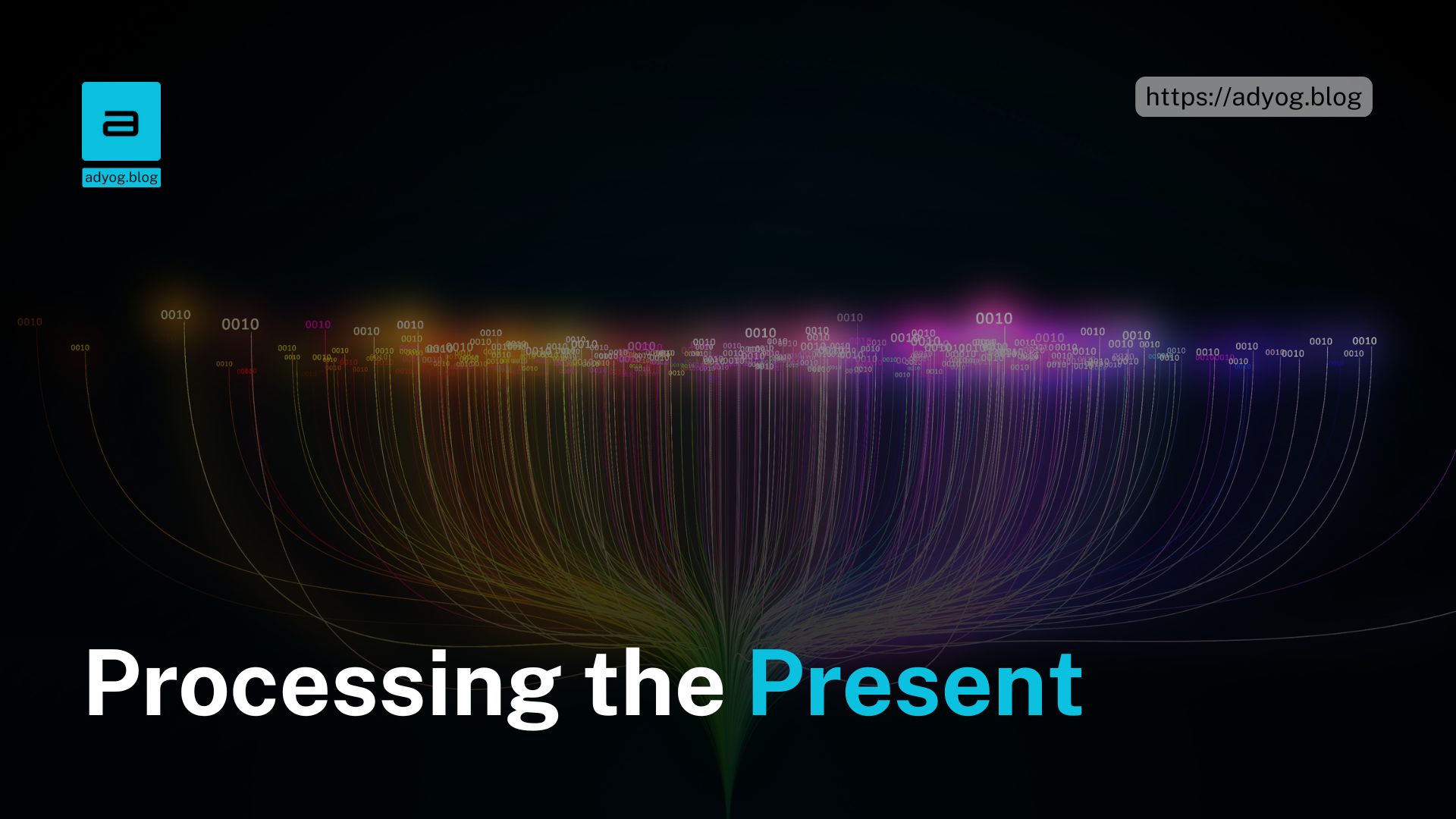The age of artificial intelligence (AI) is rapidly evolving, and at the forefront of this transformation is tokenization and real-time multimodal AI. These advancements enable AI to process and integrate text, images, audio, and video seamlessly, allowing for a more human-like interaction with machines. With the power of transformer models and real-time streaming, AI is becoming more context-aware, interactive, and intelligent than ever before.
By understanding how tokenization and real-time multimodal AI work, businesses and developers can leverage these breakthroughs to enhance customer experiences, automate workflows, and accelerate AI-powered decision-making.
At the heart of this AI evolution are two fundamental breakthroughs:
- Tokenization of Everything – converting all forms of data (text, images, video, and sound) into a unified representation.
- Real-Time Streaming and Multimodal Integration – allowing AI to process inputs and outputs dynamically, like a human brain.
In this article, we’ll decode the mechanics behind these advancements, explore their implications, and analyze their role in the path to Artificial General Intelligence (AGI).
1. The Rise of Multimodal AI: Tokenizing Everything
What is Multimodal AI?
Until recently, AI models like GPT-3 primarily processed text-based inputs. But with GPT-4, Gemini, and Claude, AI can now understand and generate multiple types of data:
- Text – ChatGPT, Google Bard
- Images – DALL·E, Stable Diffusion
- Audio – Whisper, VALL-E
- Video – Runway ML, Sora
This shift is powered by tokenization, which allows AI to convert different forms of input (text, images, speech) into a single, standardized format—tokens.
What is Tokenization?
Tokenization is the process of breaking down any data into discrete units (tokens) that AI can process.
- Text → Words and subwords split into tokens (e.g., “intelligence” → [“intel”, “ligence”])
- Images → Pixel data converted into embeddings (vector representations)
- Audio → Waveforms segmented into tokens
- Video → Frames converted into sequential embeddings
How Tokenization Works

By tokenizing everything, AI models can process diverse inputs in a uniform way—unlocking true multimodality.
🚀 Example: You show an AI model an image, and it understands the context while listening to your voice commands. It then responds in real-time, generating a voice reply or an image modification.
2. The Transformer Model: The New Fundamental Unit of Compute
What is the Transformer Model?
The Transformer Architecture, introduced in the 2017 paper “Attention is All You Need”, revolutionized AI by introducing self-attention mechanisms.
- Previous AI Models (RNNs & LSTMs) → Processed data sequentially (one word at a time)
- Transformers → Process all input at once, using attention to weigh relationships between tokens
🚀 Why Transformers Are Powerful:
- Parallel Processing – Can analyze an entire dataset at once
- Context Awareness – Can remember and relate information over long distances
- Multimodal Capability – Can process text, images, and audio in the same architecture
Fun Fact: Every major AI model today—ChatGPT, Google Gemini, Claude, Mistral—is built on a transformer-based foundation.
3. Real-Time Streaming AI: The Game-Changer
From Transactional to Real-Time AI
Traditional AI models worked in a request-response format:
1️⃣ User inputs text → 2️⃣ AI processes → 3️⃣ AI generates output
But real-time AI is different. It allows for:
- Live Conversation: AI can listen and respond dynamically, like a real person.
- Visual Processing: AI can analyze real-time video feeds and adjust responses.
- Instant Interruption: Users can interrupt AI mid-response, and it adapts on the fly.
💡 Example: Imagine a real-time AI language translator. As you speak in English, the AI listens, translates, and responds in French—seamlessly.
How Real-Time Streaming Works

🚀 Implications of Real-Time AI:
- Improved Customer Support – AI chatbots will respond naturally, with voice and emotion.
- AI-Powered Co-Pilots – Developers, writers, and designers will interact with AI as real-time assistants.
- Healthcare Applications – AI will monitor patient symptoms and respond instantly.
4. The Road to AGI: What’s Next?
We’re witnessing a clear path toward Artificial General Intelligence (AGI).
The 5-Step Formula for AGI
- Tokenize Everything – Convert all sensory inputs into unified token streams
- Larger Context Windows – Expand AI’s ability to process entire books, conversations, and videos
- More Training Data – Train models on diverse, high-quality datasets
- Real-Time Adaptability – Improve live-streaming capabilities
- Smarter Transformers – Build larger, more efficient transformer models
💡 Key Question: If AI can see, hear, process, and interact in real-time, what separates it from human cognition?
5. Ethical and Philosophical Considerations
As AI becomes more real-time and human-like, big questions emerge:
- Is AI Sentient? – When AI expresses emotion, is it real or just a simulation?
- AI Autonomy – How do we ensure AI systems align with human values?
- Bias and Safety – Who decides what AI can and cannot say?
🚨 The Future: We must balance AI advancements with responsible AI governance.
6. Business & Developer Impact: What Should You Do?
For Businesses: How to Leverage Multimodal AI
With AI evolving beyond text and into multimodal capabilities, businesses have an opportunity to supercharge efficiency, customer experience, and decision-making. Here’s how:
1. Upgrade Customer Support with AI-Powered Assistants
- Real-Time AI Chatbots → AI can now listen, see, and respond dynamically in text, voice, or video.
- Example: AI customer support agents that speak naturally, understand emotions, and resolve complex issues.
- Tools to Explore: OpenAI Assistants API, Google Gemini Pro, Anthropic Claude
2. Automate Content Creation & Media Generation
- AI-Generated Marketing Content → Create blogs, images, and videos instantly.
- Example: AI-powered product descriptions, automated video ads, and AI-driven email campaigns.
- Tools to Explore: ChatGPT-4, DALL·E, Runway ML, Jasper AI
3. Leverage AI for Real-Time Analytics & Decision Making
- AI-Powered Business Intelligence → Analyze massive datasets in real time and generate insights instantly.
- Example: AI-driven stock market predictions, customer behavior tracking, and financial risk assessment.
- Tools to Explore: Microsoft Azure AI, Google Cloud Vertex AI, IBM Watson
4. Enhance Personalization & Recommendation Engines
- AI-Powered Recommendations → Suggest personalized products, services, and content based on user behavior.
- Example: AI-driven Netflix-style recommendations, Amazon-style product suggestions, or Spotify’s AI-generated playlists.
- Tools to Explore: Meta AI, Nvidia Merlin, Amazon Personalize
5. Boost Cybersecurity & Fraud Detection
- AI Security Systems → Detect fraud, hacking attempts, and anomalies in real time.
- Example: AI-powered fraud detection in banking, cybersecurity in cloud environments, and real-time authentication.
- Tools to Explore: Darktrace AI, Palo Alto Cortex XSIAM, Microsoft Sentinel
For Developers & Engineers: How to Build Next-Gen AI Applications
With AI models becoming real-time and multimodal, developers must adapt to new architectures and workflows. Here’s what technical teams should focus on:
1. Optimize AI Workflows for Multimodal Input
- Unify Text, Image & Audio Pipelines → Build APIs that accept multiple modalities as input/output.
- Use Cases: AI-powered document processing, voice-enabled chatbots, and AI-assisted medical diagnosis.
- Tools to Explore: OpenAI Multimodal API, Hugging Face Transformers, Google Gemini
2. Implement Real-Time AI Streaming Capabilities
- Upgrade AI Pipelines to Handle Continuous Input → AI should process live data streams instead of batch processing.
- Use Cases: Real-time video monitoring, voice-controlled assistants, and AI-powered transcription.
- Tools to Explore: WebSockets, gRPC, TensorFlow Serving
3. Use Transformer-Based Models for High-Performance AI
- Shift from CNNs/RNNs to Transformer Architectures → Ensure that models are designed for parallel processing.
- Use Cases: AI-powered medical imaging, autonomous driving, and predictive analytics.
- Tools to Explore: PyTorch Transformers, TensorFlow T5, Google BERT
4. Deploy AI Models Efficiently with Edge Computing
- AI at the Edge → Reduce latency by running AI locally on devices instead of the cloud.
- Use Cases: AI-powered smart cameras, IoT-based AI assistants, and low-latency real-time applications.
- Tools to Explore: Nvidia Jetson AI, TensorFlow Lite, AWS IoT Greengrass
5. Build AI-Powered Assistants & Co-Pilots
- Create AI-Powered Developer Tools → Use AI to enhance coding, debugging, and documentation.
- Use Cases: AI coding assistants (like GitHub Copilot), AI-powered API documentation generators, and AI-enhanced software testing.
- Tools to Explore: GitHub Copilot, OpenAI Codex, Meta AI Code Llama
Conclusion: AI is Transforming the World – Are You Ready?
We are at the cusp of an AI revolution—where machines see, hear, and think in real-time.
AI is no longer just a text-based system—it’s now a multimodal, real-time, context-aware assistant that can see, hear, process, and interact in dynamic ways.
🚀 What’s next?
- AI-powered real-time virtual assistants will become standard in every industry.
- Multimodal AI will change how businesses operate, from customer support to security.
- AGI (Artificial General Intelligence) is getting closer as tokenization, transformers, and real-time AI continue to evolve.
💡 Are you prepared for the AI transformation? Start experimenting, integrating, and innovating today!





Leave a Reply